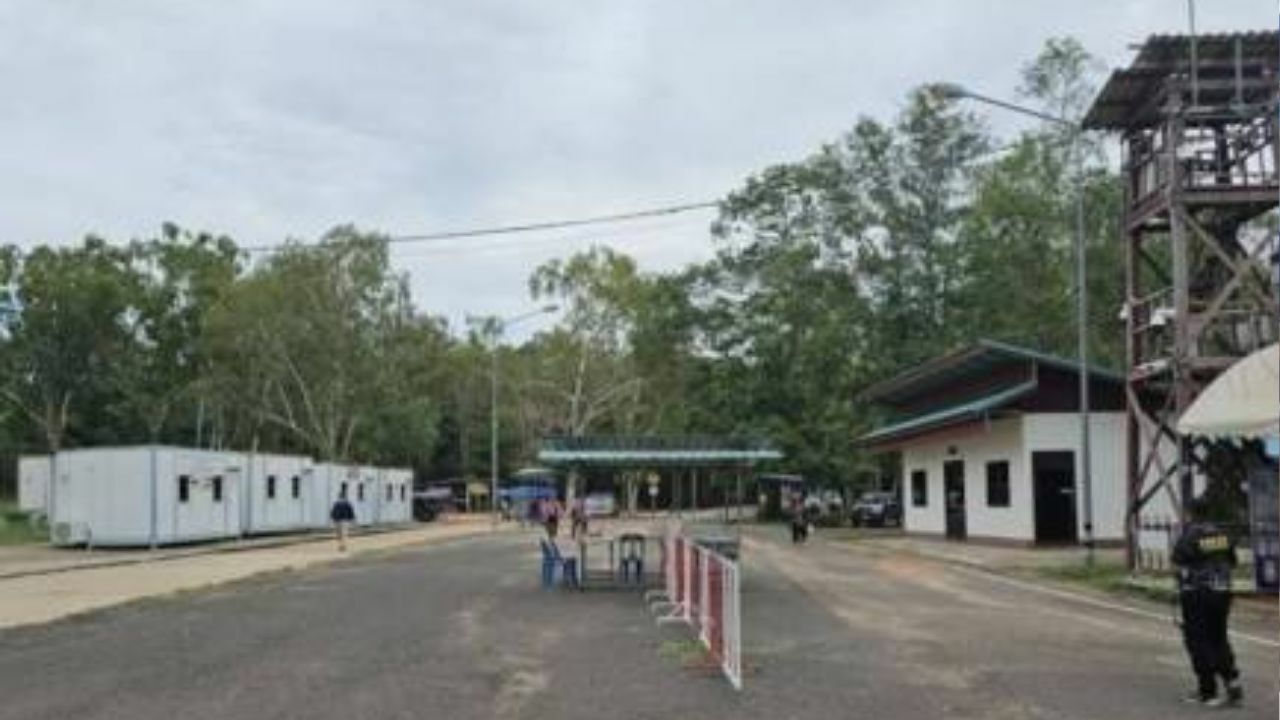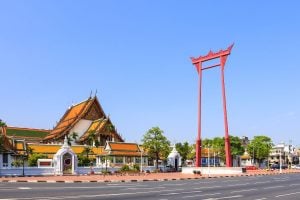Thai-Cambodian border checkpoint closures risk trade disruption
Local economies brace for impact amid rising border tensions

The Ministry of Commerce has assessed the impact of the closure of Thai-Cambodian border trade checkpoints, effective from yesterday, June 8. The closure has affected small businesses and markets, prompting discussions with the private sector to address the situation.
Last year, Aranyaprathet in Sa Kaeo province accounted for 63.4% of trade, valued at 110.718 billion baht (US$3.39 billion). Khlong Yai in Trat contributed 16.8%, with 29.289 billion baht (US$895 million), followed by Chanthaburi with 15.3%, valued at 26.621 billion baht (US$813 million).
Other significant checkpoints included Chong Chom in Surin with 6.084 billion baht (3.5%) and Chong Sa-ngam in Si Sa Ket with 1.818 billion baht (US$55.66 million) (1%). The total trade value across these five checkpoints was 174.53 billion baht (US$5.3 billion).
The closure of Aranyaprathet alone could affect more than 60% of the total trade. Combined closures of Khlong Yai and Chanthaburi would impact a further 30%. Therefore, closing these three major checkpoints would nearly halt all Thai-Cambodian border trade.
Key exports from Thailand to Cambodia, recorded in the first four months of 2025, include beverages, vehicle/motorcycle components, engines, and agricultural machinery, accounting for over 30% of total exports.
Major Thai imports from Cambodia include cassava, metal scraps (aluminium, copper), and wire, crucial for Thailand’s industries such as animal feed, recycling, and electronics. The checkpoint closures would lead to delays, increased costs, and disruptions in the production chain.
Border trade
The ministry examined the temporal and continuity impacts, noting that while June sees adjustments in checkpoint opening hours primarily concerning people movement, it has not yet affected overall trade. However, permanent or simultaneous multiple checkpoint closures could have short-term effects (up to three months) on cross-border small businesses and logistics, causing route diversions.
Medium-term impacts (3 to 12 months) may force exporters to seek new markets or routes, with industries reliant on Cambodian imports starting to feel the effects. Long-term effects (over one year) could undermine investor confidence in border stability, potentially shifting trade routes to maritime options or through other countries.
Last year, Thai-Cambodian border trade totalled 174.53 billion baht (US$5.3 billion), a 7.9% increase. Thai exports amounted to 141.846 billion baht (US$4.3 billion), up 7.5%, while imports were 32.684 billion baht (US$999 million), up 9.8%, resulting in a trade surplus of 109.163 billion baht (US$3.33 billion).
In the first four months of 2025, total trade reached 64.612 billion baht (US$1.97 billion), a 12.3% increase, with Thai exports at 50.225 billion baht (US$1.5 billion) (up 9.7%) and imports at 14.387 billion baht (US$440 million) (up 22.4%), yielding a trade surplus of 35.835 billion baht (US$1 billion). Aranyaprathet accounted for 62.3% of this, followed by Khlong Yai with 19.3% and Chanthaburi with 15.5%.
The ministry also discussed risk management opportunities, suggesting adaptation strategies if checkpoint closures are unavoidable. These include diversifying trade to other open checkpoints, developing alternative logistics such as rail or maritime routes through Vietnam or Laos, and engaging in bilateral negotiations to mitigate economic impacts and reassure traders.
The Ministry of Commerce plans to consult with the government and private sectors to prepare trade assistance policies and develop timely solutions, reported KhaoSod.
Latest Thailand News
Follow The Thaiger on Google News:


























